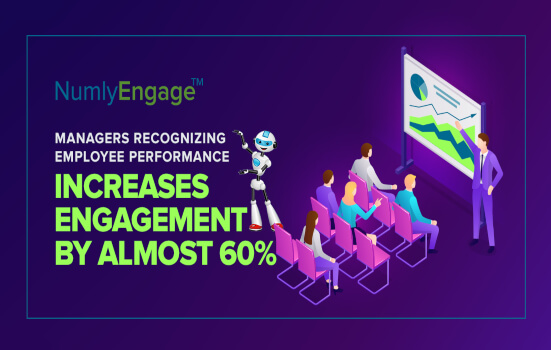Organizations across the globe are fighting the uphill battle of improving employee engagement. The State of Employee Engagement in 2019 report throws light on some important statistics that organizations should pay heed to.
The report shows:
- Organizations need substantial help to improve employee engagement as only 44% of participants believe that employees in their organization give discretionary effort
- Most participants feel that less than 70% of their workforce is engaged
- 80% of HR professionals connect employee engagement with trust in leaders
- While 71% of highly engaged organizations recognize employees for a job well done, the same is true for only 41% of less engaged organizations
- Providing career growth opportunities is a major differentiator between highly engaged organizations and others.
- Highly engaged organizations are more than twice as likely to report being top financial performers in their industries.
The past two decades have brought about significant change in the way employees are valued and treated. Organizations have recognized the impact of engaged employees on business success. Owing to this, employee engagement has gone from an HR topic of discussion to a hot business issue. As organizations move into the Glassdoor era where every corporate decision is exposed to scrutiny, internal processes and work culture are becoming increasingly visible. But organizations have the opportunity to turn this spotlight into a competitive advantage to attract good talent.
According to a Gallup poll, only 13% of the global workforce is “highly engaged”. More than half the workforce would not recommend the company they are working for to their peers. Given the rising talent wares, can organizations afford this?
Why do we say employee engagement is a culture change?
Company culture, broadly defined, is the personality of the company. It represents the environment that the people live and work in and is the sum of the core values of the organization; its mission, how employees are treated, how interactions within the company take place, the level of caring, and the feeling of community within the organization.
Employee engagement, not to be confused with employee satisfaction, is a workplace approach that provides the right conditions for the employees to put in their best at work each day. It defines the extent to which employees feel committed to their jobs and put in discretionary effort into their work. Engaged employees are absorbed and enthusiastic about their work. They take positive actions to contribute to the organization’s goals and success.
Company culture can be compared to a set of miniature societies within a large society. The cultures of these societies are an expression of how work is performed, the value system, and the collective behavior of the people influenced by these factors. Company culture is not a singular concept. It is a combination of the stated culture (what the organization broadcasts) and the actual culture (the way employees act and how they treat and interact with each other and their work).
Since employees are at the center of both employee engagement and company culture, it becomes clear that if you want to have highly engaged employees, you need to create a culture that enables them to be so. But to do so, it is essential to understand what employees want. What is it that drives them?
What do employees want?
Who are your employees? The employee demographic is changing very fast today. The motivations that drove baby boomers and GenX are not the same as those of the millennials and Gen Z. The two latter generations are less motivated by money and more by purpose-driven work. They are invested in their growth and are focused on having ‘careers’ over ‘jobs’. Cosmetic modes of engagement such as fancy cafes, sleep pods, or elaborate annual parties don’t make the cut here. Organizations, thus, need to pay close attention to the unique needs of their workforce and create the right opportunities and engagements for them.
The workforce also wants an environment that enables achievement. They want to see the organization invested in their growth story. They need the organization to help them identify avenues for improvement, upskilling and reskilling so that they can accelerate along their growth trajectory.
However, for organizations, such initiatives have been usually based on guesswork so far. Evaluations such as 16 Personality Factor tests or behavioral skill assessments, along with technical dexterity assessments take the guesswork out of this exercise and make it fact−based. It also helps organizations personalize career paths of the employees, which leads to a higher degree of engagement.
Employee engagement also correlates to how career progressions are viewed in the organizations. When employees see that their hard work is being recognized, they are being given proactive support, their development needs are met, then they don’t need an additional reason to give back more to the organizations. Organizations that have a plan to identify and then develop high−potential employees and lead them to fill their leadership pipeline sends out a strong message to the employees − it shows that the organization is willing to put its money where its mouth is.
Employee engagement also can no longer be a one−way street with the organization directing what should be done and then demand the expected outcomes. Today’s employees want a proactive two−way feedback system that helps the organization see what they can do better and where the organization needs to improve. Having such systems assists in evaluating the efficiency of all employee experience and engagement activities and measuring the success of engagement initiatives such as mentoring or learning and development programs.
The paradigm of employee engagement and what employees want has evolved. To accommodate these new ideas and concepts, organizations have no other option but to re−evaluate how they have been conducting their processes so far and bring about the desired change. And effective change can only be implemented when it is ingrained into the DNA of company culture.
With NumlyEngage™, you can use the power of machine learning and AI to define your employee engagement initiatives. Get Started with a 60-day Pilot on NumlyEngage™ today!

